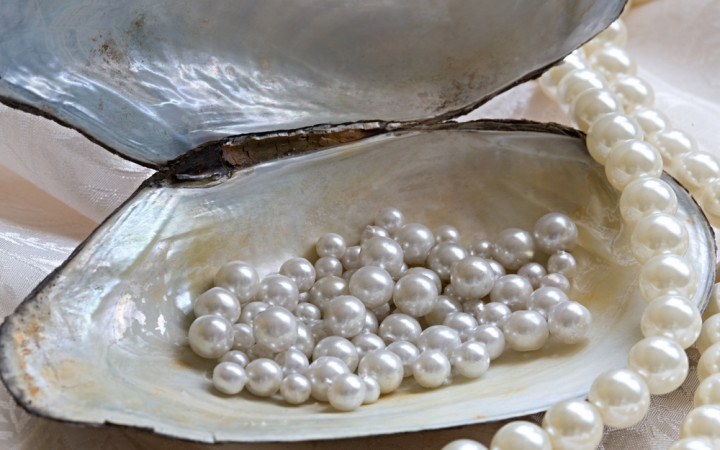Today’s Wonder of the Day was inspired by Kaden. Kaden Wonders, “Does every oyster have a pearl?” Thanks for WONDERing with us, Kaden!
Do you like jewelry? Whether you prefer necklaces or earrings, you probably like them with diamonds, rubies, sapphires or one of the many other types of precious jewels. If you love necklaces, you may be a big fan of pearls, too.
Do you know where pearls come from? They don't grow on trees. You can't plant them. They aren't mined out of the ground either. So where do pearls come from?
Pearls come from a living sea creature: the oyster. These beautiful round jewels are the result of a biological process within the oyster as it protects itself from foreign substances.
Although clams and mussels can also produce pearls, they don't do so very often. Most pearls are made by oysters, and they can be made in either freshwater or saltwater environments.
As oysters grow, an internal organ called the mantle uses minerals from the oyster's food to produce a substance called nacre. Nacre is the material that forms the oyster's shell.
Occasionally, a foreign substance, such as a grain of sand, may find its way into the oyster and get stuck between the mantle and the shell. This irritates the mantle, kind of like you might get irritated skin if you get a splinter of wood in your finger.
To protect itself, an oyster's natural reaction will be to cover up the irritant. It does so by causing the mantle to cover the irritant with layers of nacre. This substance, usually used to create the shell, will instead form a pearl.
The most beautiful pearls — the kind used for jewelry — are perfectly round. Not all pearls turn out this way, though. Some pearls form in uneven shapes. These less-than-perfect pearls are known as pearls.
Most people think of pearls as being white. They can come in a variety of colors, though. Other common pearl colors include gray, red, blue, green and even black.
Pearls that form naturally inside of oysters are called natural pearls. Sometimes oysters get a bit of help from pearl harvesters, though. These people open oysters, cut small slits in the mantle and insert small irritants under the mantle. The pearls produced by this method are called cultured pearls.
Cultured and natural pearls are usually considered to be of equal quality. Cultured pearls are often less expensive, though, because they're not as rare. While any oyster — and clams and mussels — can produce pearls, some species of oysters are more likely to produce pearls, while others may be harvested primarily to serve as food.




